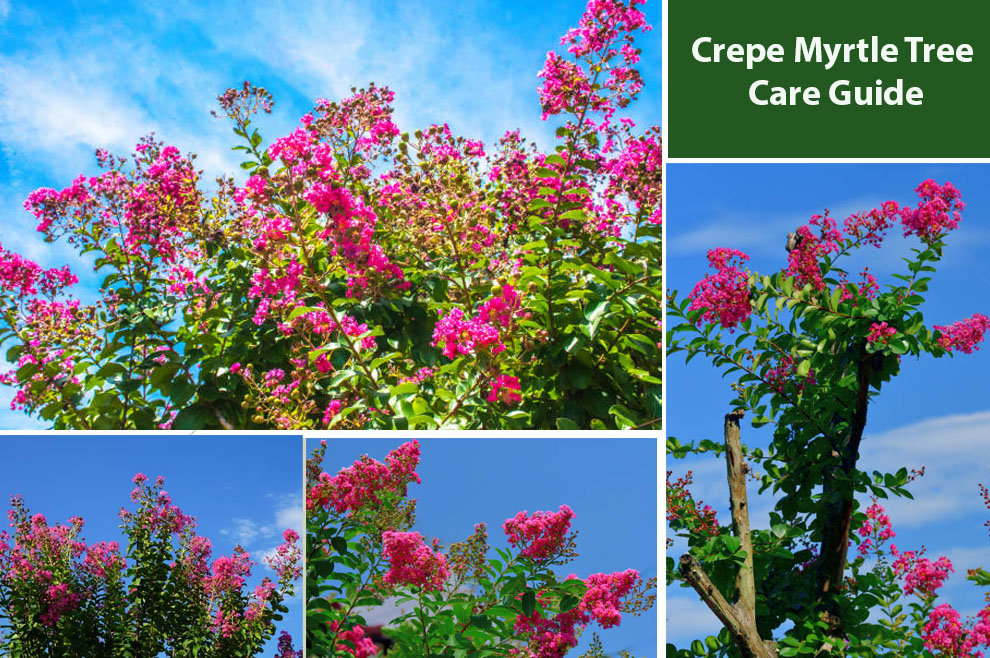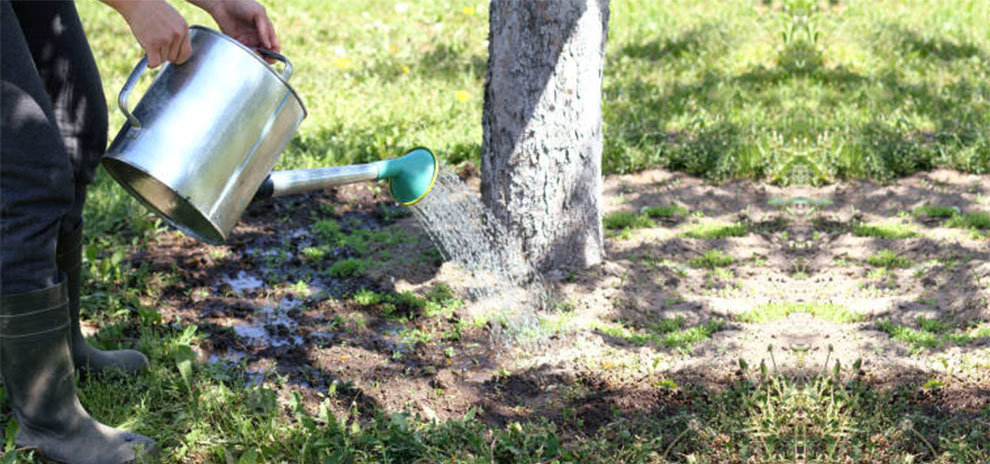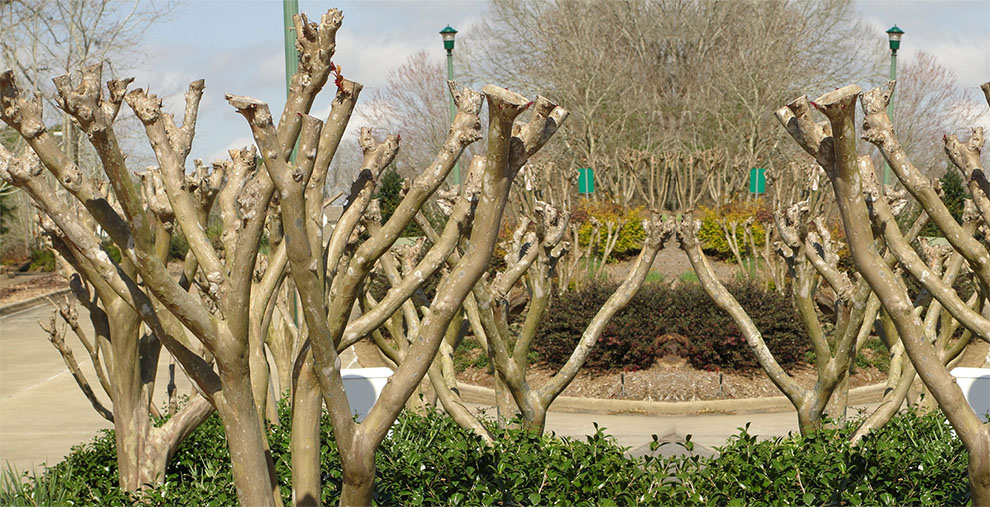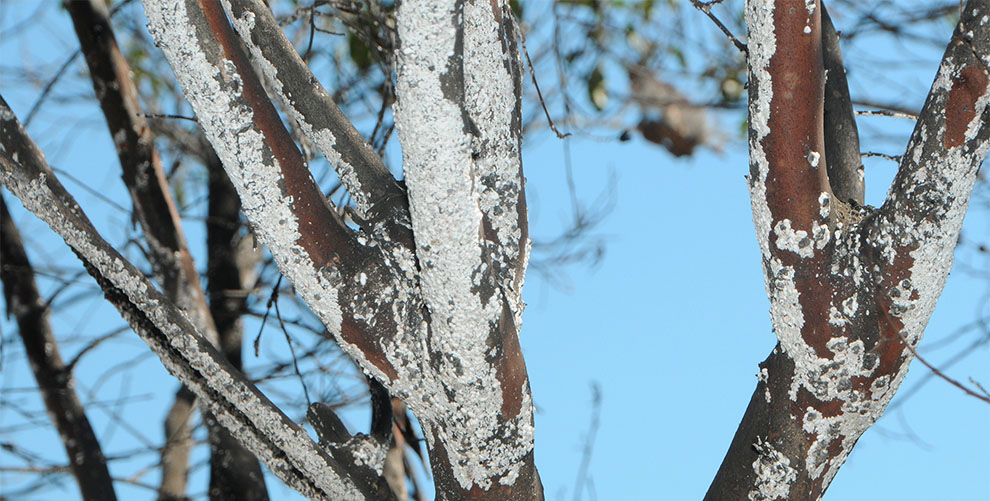How to Care for Crepe Myrtle?
Full sun, light fertilizer, and acidic to neutral soil is what your crepe myrtle needs to thrive

Crepe Myrtle or Crape Myrtle or Loosestrife is a specie comprising beautiful, small trees native to Asia that have been naturalized in the United States Deep South. With their attractive bark, showy summer flowers, and beautiful fall color, Crepe Myrtles are the most satisfactory plants that work as year-round garden performers. Crepe Myrtle belongs to the Lagerstroemia genus comprising a group of about fifty trees and cultivators.
You will see them in almost every yard. Though not unique, it is a prevalent testament to every surrounding. How to care for crepe myrtle and growing it is not challenging in the areas where they are hardy – USDA zones nine down to seven.
However, some varieties can also thrive in zone six. Regardless, growing Crepe Myrtle is easy, provided you plant it in the correct location. Cultivated worldwide in subtropical and tropical climates where the warm weather helps them thrive and depict their spectacular beauty, these double as privacy screens or colorful hedges.
You can achieve larger plants with proper care, and they can act as fantastic focal points and attractive specimens in every landscape.
How To Take Care of Crape Myrtle Plant?
Fortunately, the Lagerstroemia species is low maintenance, but there are still some things you can do to get the best blooms from the crepe myrtle and ensure that your plant thrives. Caring for a crepe myrtle commences with proper planning, especially with the location selection.
This specie can tolerate pollution. So, you can also grow them closer to the street. However, their small size does not qualify them as street trees. So, much before you learn how to care for crepe myrtle bush, you must ascertain whether you want your plant to be a tree or a shrub; accordingly, you can plan its growth.
The remaining care aspects for the crepe myrtle involve essential maintenance and site conditions. Hence, understanding how to care for the plant and where to plant it can give you the most beautiful for the buck.
Now, let us address the tips for crepe myrtle tree care one by one:
1. Soil

Luckily, Crepe Myrtle varieties are not very demanding for a particular soil pH, but they like slightly acidic or neutral soil over alkaline. Once planted, you should use soil to pack the roots. To ensure healthy growth and proper crepe myrtle bush care, start with wet soil and regularly water across the first year in the growing season. It helps avoid air pockets and does not dry the roots.
In all situations, the soil must be well-draining because the plant cannot tolerate standing water as it can result in root rotting. In addition, you must not grow the crepe myrtle in very rich soil. It can result in more foliage than desired.
2. How much sun do crepe myrtles need?
An imperative aspect of understanding how to care for crepe myrtle trees is understanding the plant’s sun requirements. The plant thrives in full sun and demands at least six hours of full sun. If the plant does not receive ample sunlight, it becomes droopy, and leaves begin to fall.
Hence, you must plant them in a spot where it receives sunlight for most of the day. You will fail to offer the necessary crepe myrtle bush care if you grow the tree in shaded areas, resulting in stunted growth.
3. Location
Pick a location with generous space for the tree to grow to its intended height sans restriction. When planting the crepe myrtle, ensure there is ample horizontal space to allow the plant to expand, but be thorough with your chosen variety’s maximum height, as the overhanging elements or porch ceilings might curtail their growth.
Regardless, for proper crepe myrtle tree care, it is recommended to have an unobstructed space like a fence line or driveway to plant the trees as it receives necessary sunlight without having to compete for space.
4. Water

Unlike most trees, crepe myrtles demand consistent watering till they establish their roots. But that does not mean you overwater the plants. Even though it has medium watering requirements, it can be reasonably drought-resistant, provided it receives water at least once a week.
If you live in a geography wherein rains are infrequent, you must ensure that the surrounding soil is perennially moist. How to care for crape myrtle depends on the trunk’s diameter. It indicates how much water the tree demands. If it is large, the watering requirement will be high. The ideal situation for care is eliminating overwatering and planting trees in well-drained soil.
5. Fertilizer
Ensuring the plant receives the desired nutrition is vital for the crepe myrtle tree care. Ideally, you must fertilize the plant lightly or avoid it altogether. These supplemental fertilizers boost foliage growth but inhibit bloom production. So, if necessary to use a fertilizer, opt for a slow-release alternative with high nitrogen content.
When the leaves appear first, you can use this fertilizer for proper crepe myrtle bush care. An acid mulch comprising oak leaves or pine bark can also help promote growth. To understand whether the feed is suitable for your plant, check the label and read through its NPK formulation.
However, before fertilization, perform a soil assessment test to assess whether your soil is deficient or if there is any other issue. How to take care of crepe myrtle once the growing season ceases? Following the growing season, crepe myrtles should be fertilized only once a year, typically in the spring before the emergence of the new growth.
As you prepare for the colder months, you can discontinue the fertilizer to toughen the plant for dormancy.
6. Temperature and humidity
As per the USDA zone map, crepe myrtle grows in the hardiness zones six through nine, but sadly, if you want to execute proper care, planting north of seven is not recommended. Only the well-guarded underground or mulched roots can be hardy to thrive in colder climates.
However, the exposed branches may die if the temperature drops below -5-degree Fahrenheit. In case of dead branches, how to care for crepe myrtle? You can prune all the branches to the soil level to guard the roots. The plant blooms on the new wood, implying new growth every spring. Once established, the plant is drought and heat-tolerant.
7. Crepe myrtle bush trimming

Most people find pruning the crepe myrtle a chore. However, it is pivotal for multiple reasons. Hence, for best results your crepe myrtle tree care, must include pruning the crepe myrtle in early spring or winter.
Crepe myrtles have a fast growth rate. Pruning can further help foster bloom production and beautify the plant by elevating seasonal interest, exfoliating the bark, and establishing the best form and size by eliminating errant branches and suckers.
In the case of giant trees and shrubs, you can chop off twiggy growth, remove basal suckers, cross branches, and those growing towards the plant’s center. Be careful while pruning, and progress slowly, removing the side branches up to four to five feet, thereby revealing the beautiful bark of the trunks.
Since crepe myrtles blossom on the new wood, proper crepe myrtle tree care demands pruning during early spring or winter. It motivates attractive blooming. Please remember if you wish to establish the plant in the tree form, you must prune all but one trunk using loppers or hand pruners. It helps determine a clear leader.
However, deciding to grow as a tree can be added to the continuous chore of tidying the suckers. You will have to perform regular structural pruning till there is an established leader.
How To Care for Young Crepe Myrtle Trees In Winter?
In severe winters, plants may experience damage. Hence, take immediate measures to protect the plant. Here are some tips for assistance:
Step 1 – Use a probiotic fertilizer in the fall, such as Dr. Earth. It helps build the plant’s cold hardiness and makes the roots solid. Across the fall, you must give your plant ample water to foster root growth. Dr. Earth’s all-purpose fertilizer is a homogenous and pelletized all-purpose fertilizer that yields remarkable results because it releases the nutrients quickly and simultaneously continues to feed the plant for several months. Its premium scientific formula offers optimum primary plant nutrients and multi-minerals.
Step 2 – Include a minimum of three-inch mulch layer over the root zone for insulating the roots from the cold. But botanists recommend at least a six-inch mulch layer for excellent crepe myrtle bush care.
Step 3 – Lastly, wrap small and young Crepe trees with burlap and add an insulating filter like straw or leaves to receive added protection. For dwarf plants, you can use bush jackets. These are reusable insulating covers enveloping the plant. During the spring, get rid of all the extra wraps and mulch.
Crepe Myrtle Diseases

Fortunately, not too many pest issues infect the plant. However, they are susceptible to sooty mold, powdery mildew, and other fungal infections that can further shorten their already short lifespan. One of the easiest ways to deal with it is prevention.
So, water the roots instead of the foliage, and let the tree have ample space to air dry post rainstorms. You can use a general fungicide yearly to prevent the infected plant from dying.
Here’s more on what can go wrong with your crepe myrtles.
Frequently Asked Questions
Ques 1. When should crepe myrtle be cut back?
Ans. If you decide to prune the crepe myrtles, you must do it in mid-February. It helps prevent winter injury. Ideally, you must prune strictly to shape the tree and not curtail its height. Pruning does not help with blooming.
Ques 2. Is Epsom salt good for crape myrtles?
Ans. Epsom salts can be an excellent addition to the soil for crepe myrtle bush care. However, avoid it if the soil is alkaline.
Ques 3. Are coffee grounds good for crepe myrtle?
Ans. Coffee grounds can be one of the best ground mulch, especially if you have an acid-loving plant.
Ques 4. How do you keep a crape myrtle blooming?
Ans. We have discussed above the care guidelines for crepe myrtle tree care. If you follow them to the T, your plant will bloom.
Ques 5. How far should I plant a crape myrtle from the fence?
Ans. If you grow crape myrtle for a privacy screen, you must keep it at least three feet from the fence or the property line.
